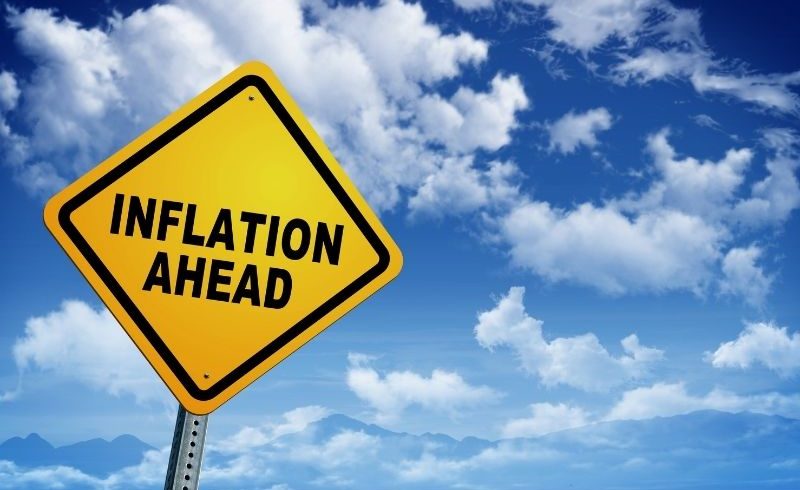How to stay ahead of the inflation curve
Inflation is the word that we’re all hearing these days. It’s paired with rising gas prices and skyrocketing grocery bills. And it’s a fact: Canada’s annual inflation rate in April 2022 was 6.8% – the highest since January 1991.
We’re emerging from a global pandemic, there is geopolitical unrest, and supply chains are being disrupted: all of these are connected to rising inflation. EverSavvy Financial will be looking at inflation over the next few months, and how it affects us as Canadian business owners and consumers. So let’s get Inflation-Savvy.
1. What is Inflation?
Inflation is the rise over time of the price of goods and services – also known as “the cost of living”. CPI, or Consumer Price Index, is used as the main metric. For Canadians, it is the comparison of the price of a fixed group of goods and services (like food, transportation, and shelter). The Bank of Canada is currently predicting a rise in inflation through the first half of 2022, and then a plateau or decrease by the end of the year. But what that means *right now* is that with our current money we’ll be able to buy fewer things.
2. Who manages inflation?
The Bank of Canada. Their explicit policy is to keep it “low, stable, and predictable”. By adjusting their key interest rate, the Bank can directly manage inflation. They have publicly stated that their target for inflation control is 2% (or within 1-3%). The Bank met again in June to raise rates in an attempt to combat inflation, with the result being a 0.5% increase. The Bank of Canada is expected to continue to put upward pressure on interest rates to further control inflation throughout the year, as required. The next rate announcement is expected in July 2022.
3. Where are we seeing the most growth in prices?
- Gas Prices – The increase in gas prices is adding to the overall cost of “shelter”. Additional home-related costs, and rent, have also increased.
- Cost of Groceries – According to Statistics Canada, Canadians paid 9.7% more for food in April 2022 than in April 2021. Prices are rising across the board, from fresh produce to meat to a cup of coffee.
4. Is high inflation…bad?
Inflation reduces our purchasing power. As a result, how we save, shop, and travel during periods of high inflation are likely to change. What that means for business owners is there are rising costs of doing business, and clients who have to make cutbacks.
5. A few tips for staying Inflation-Savvy
This may feel like more bad news at the end of a tough time. My goal is to keep my clients informed, and feeling financially empowered. To that end, here are a few tips to stay Inflation-Savvy:
Tips for your personal finance:
- Re-evaluate your budget. Look for items that you might be able to reduce or temporarily do without. Can you make coffee at home? Can you carpool?
- Review your debt situation. Are your interest rates variable or fixed? Have you computed the impact rising interest rates will have on your variable rate monthly payments?
Tips for your business:
- Look for rising costs. There are increases in input costs, supply chain disruptions, and upward pressure on financing costs. Are you able to pass some of these along to your consumers? If you are not factoring in these rising costs somewhere, your bottom line will be impacted.
As always, if you want to talk more about your personal circumstances, we are here to help. Please email us to set up a meeting.
Next up for the 2022 Inflation Special: Inflation and Your Travel Plans.


Recent Comments